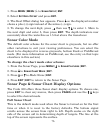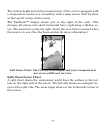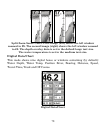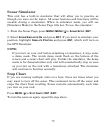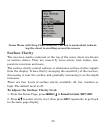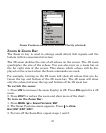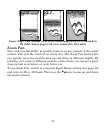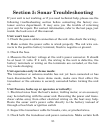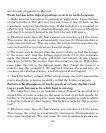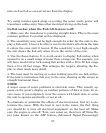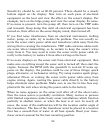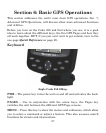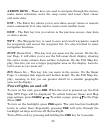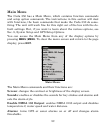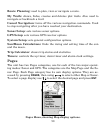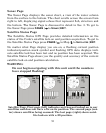84
are securely plugged in to the unit.
W
eak bottom echo, digital readings erratic or no fish signals:
1. Make sure the transducer is pointing straight down. Clean the face
of the transducer. Oil, dirt and fuel can
cause a film to form on the
transducer, reducing its effectiveness. If the transducer is mounted in-
side the hull, be sure it is shooting through only one layer of fiberglass
and that it is securely bonded to the hull. Use only LEI epoxy.
2. Electrical noise from the boat's motor can interfere with the sonar.
This causes the sonar to automatically increase its Discrimination o
r
noise rejection feature. This can cause the unit to eliminate weaker sig-
nals such as fish or even structure from the display.
3. The water may be deeper than the sonar's ability to find the bottom.
If the sonar can't find the bottom signal while it's in the automatic
mode, the digital sonar display will flash continuously. It may change
the range to limits far greater than the water you are in. If this hap-
pens, place the unit in the manual mode, then change the range to a
realistic one, (for example, 0-100 feet) and increase the sensitivity. As
you move into shallower water, a bottom signal should appear.
4. Check the battery voltage. If the voltage drops, the unit's transmitte
r
power also drops, reducing its ability to find the bottom or targets.
Bottom echo disappears at high speeds or erratic digital read-
ing or weak bottom echo while boat is moving
1. The transducer may be in turbulent water. It must be mounted in
a
smooth flow of water in order for the sonar to work at all boat speeds. Ai
r
bubbles in the water disrupt the sonar signals, interfering with its abilit
y
to find the bottom or other targets. The technical term for this is cavita-
tion.
2. Electrical noise from the boat's motor can interfere with the sonar.
This causes the sonar to automatically increase its Discrimination o
r
noise rejection feature. This can cause the unit to eliminate weaker sig-



